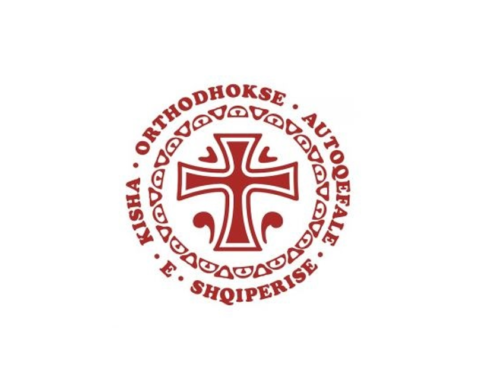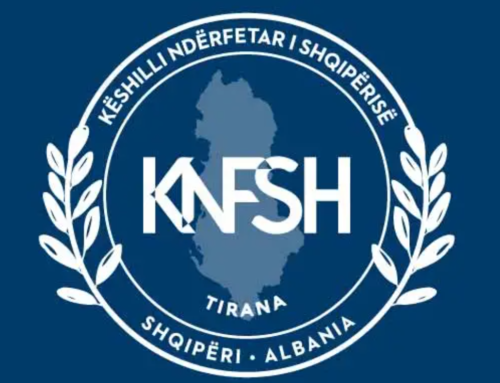INSTAT Continues to Use and Quietly Promote
the Completely Unbelievable Statistics
Reaction by the editor of the newspaper, “Resurrection”, organ of the Albanian Autocephalous Orthodox Church
In recent days, the scandalous problems related to the Census, have come to the fore again. The Census is addressed by international sources in two important documents: in the letter of the General Secretary of the World Council of Churches (WCC), Rev. Dr Olav Fykse Tveit, and in the report of the U.S. State Department for Religious Freedoms. Also, at an INSTAT event, the Census results for each region were presented again without any critical reflection, and were reacted to by the representatives of our Church who were present.
The General Secretary of the World Council of Churches (WCC) Rev. Dr. Olav Fykse Tveit expressed strongly his concern about the methodology and the results of the 2011 Census in Albania. He has raised questions about the credibility of the process which, according to him, has implications for the rights of religious minorities and religious freedom guaranteed in the constitution of the country. Tveit expressed this concern in letters sent in early May (2013) to Prof. Dr. Heiner Bielefeld, the Special Rapporteur on Freedom of Religion or Belief at the United Nations, to the Government of Albania, to the President of WCC, and to the Primate of the Orthodox Autocephalous Church of Albania, Archbishop Anastasios.
In May the annual report on Religion Freedom was also published by the State Department of USA, which among others things pointed out that “According to the census of 2011, the population consists of 2.8 million inhabitants. It is difficult to assess the extent of religious groups, because nearly 20% of respondents refused to answer optional questions on the registration of religious affiliation.
“The report also noted the opposition of the results by some of the religious communities and the possibility that these results had been influenced by fear of pressures brought against certain religious and ethnic groups. It states, “A number of religious leaders challenged the results of the census of 2011, pretending that the registration officials had not ever visit a large number of their believers…”
Another event in which this issue was again touched upon was the “celebration” of the anniversary of INSTAT, with the introduction of Census data at the regional level. The Autocephalous Orthodox Church of Albania was represented at this meeting by the Bishop of Kruja, His Grace Anthony. Before closing, in the time left for questions, Bishop Anthony stated that, “the Church has expressed its position since last December.” The number of Orthodox in Albania presented in this Census is not real. The whole methodology followed for the registration of religious affiliation does not respond at all with the basic objective methods followed in European countries. A survey conducted in our churches revealed that nearly 15,000 people claim, with their name and signature, that they were not visited by census takers, or were not asked about religious affiliation.
Also, the question arose as to how to prove the veracity of the data written by the census takers when the forms were not signed by the person who declared the information.The argument used for privacy and for the models used by other countries, in this case does not stand, since theoretically everyone has the right to require that their census form be maintained in the State Archives in order to verify their data. This becomes even more outrageous, when it is learned that in many cases recorders have completed forms by using civil registers, answering the personal questions according to their prejudices. sThe publication of data by region also raised new questions and cast even more doubt on the Census. In each table for the declaration of the religious affiliation, there were three options: unqualified believers prefer not to answer, unspecified.
If you see the published figures, you immediately will notice something very strange and suspicious about the objectivity and the goal of the Census. In regions where there is little or no Orthodox, these three options fluctuate within the limits 7-12% of respondents. In areas where there are significant numbers of Orthodox believers, in every case it exceeds 20%, reaching the limits of the grotesque in Fier of 30% undeclared, and in Vlora with 35%s. So, only in areas where there were large numbers of Orthodox one-third of the population refused to express their faith; whereas in all other areas they do not have this problem (only 10%?). This is totally incredible and reveals that for those who continue to use these figures, as if the Census had been conducted normally, proves that the overall figure of 20% undeclared, has to do with the pressure and manipulations that were done to the Orthodox believers, and which the blind insistence to not accept this reality increasingly proves them to be intentional.
However, although these results were questioned, as a bit odd, that is to say the results are strange, the representatives of INSTAT and even their EU consultant, declined to give clear answers, hiding behind “that is how the respondents answered”.
At the conclusion, the statement of the Clergy-Laity Council, with the full details of the survey in the churches and the letter of the General Secretary of KBK (WCC), were handed over to the Director of INSTAT.

